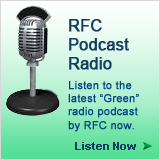The Great Eastern Garbage Patch. Have you ever heard of it? Most haven’t. Located at a natural collecting point right in the center of revolving currents called the North Pacific Gyre, the Great Eastern Garbage Patch is a floating island of waste estimated to be twice the size of Texas. That’s right- TEXAS. Somehow this massive garbage heap had shied away from the media for years, but has now been brought to the public’s attention via Captain Charles Moore of the Oceanographic Research Vessel Alguita, who is credited for its discovery.
Thousands of miles from land this garbage patch is littered with debris that many would assume is from people aboard passing ships, but researchers think not. They estimated that 80 percent of the trash is actually due to land dwellers and has eventually found its way over the years to the North Pacific Gyre. This is nothing but bad news considering that there is even more trash riding the currents as you sit and read this now, destined to add to the island’s growth.
A 10 mile-wide fleet of plastic Taco Bell take-out bags.
80,000 Nike running shoes involved in a containership spill in 1990.
Discarded fishing nets and lines that run miles long.
“Nurdles”, or tiny plastic pellets that resemble tapioca and carry high concentrations of deadly chemicals, one hundred billion pounds of which are used each year to make things like CD cases and plastic pipes.
This is just some of what can be found on and near the Great Eastern Garbage Patch, but they all equal this: roughly one million pieces of plastic per square mile across hundreds of miles of the Pacific Ocean. Countless animals in and out of the water have confused these floating plastic objects as food or have gotten tangled or strangled in plastic lines and nets only to lose their lives. According to Marine Biologist David Barnes of the British Antarctic Survey, “Plastic is not just an aesthetic problem. It can actually change entire ecosystems.”
Right now we can only expect the trash to continue invading the ocean. There are bans in place to prevent the dumping of plastics but enforcement on the open ocean is not taken seriously and when accidents occur they do not need to be reported. This means people like Captain Moore, who are trying to stop plastic from taking over our ocean, don’t even have a chance to clean up the debris left by others, even if by accident.
What is ironic is that people value plastics for the same reason plastics are causing so much harm to our oceans: its durability. While manufacturers place the blame of plastic debris on consumers, Captain Moore makes a good point saying that, “there’s no reason why a six-pack ring or a peanut butter jar should have to last for 400 years.” While manufacturers have attempted to perfect biodegradable packaging there is only one company, EarthShell, which has made real progress. The company has already begun work with the National Park Service who uses their biodegradable plates and has even provided many McDonald’s restaurants with their clamshell boxes. The Environmental Cleanup Coalition has also made a huge impact by taking the initiative to collaborate with other organizations who try to come up with ways to safely remove plastic and other pollutants from the ocean.
Recycling for Charities is passionate about helping to eliminate waste in any way possible. While we are limited to recycling electronic waste we have tips to help consumers prevent the growth of this plastic-waste island too. You can buy products with less plastic packaging and therefore decrease your plastic waste. For example, instead of buying pop or soda that has a six-pack ring around them, buy the case in the cardboard box that can later be broken down and recycled. Also, you can practice and promote the proper disposal of plastic items. Recycle your plastic waste when possible and never litter, especially near places like the beach where wildlife can mistake your trash for food. If you do not have the means to donate money to an environmental organization you can always donate your time by helping with a local clean-up at a park or beach. Remember, your small effort can make a big difference.


